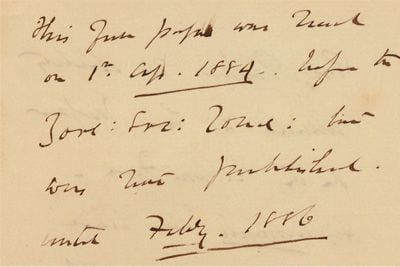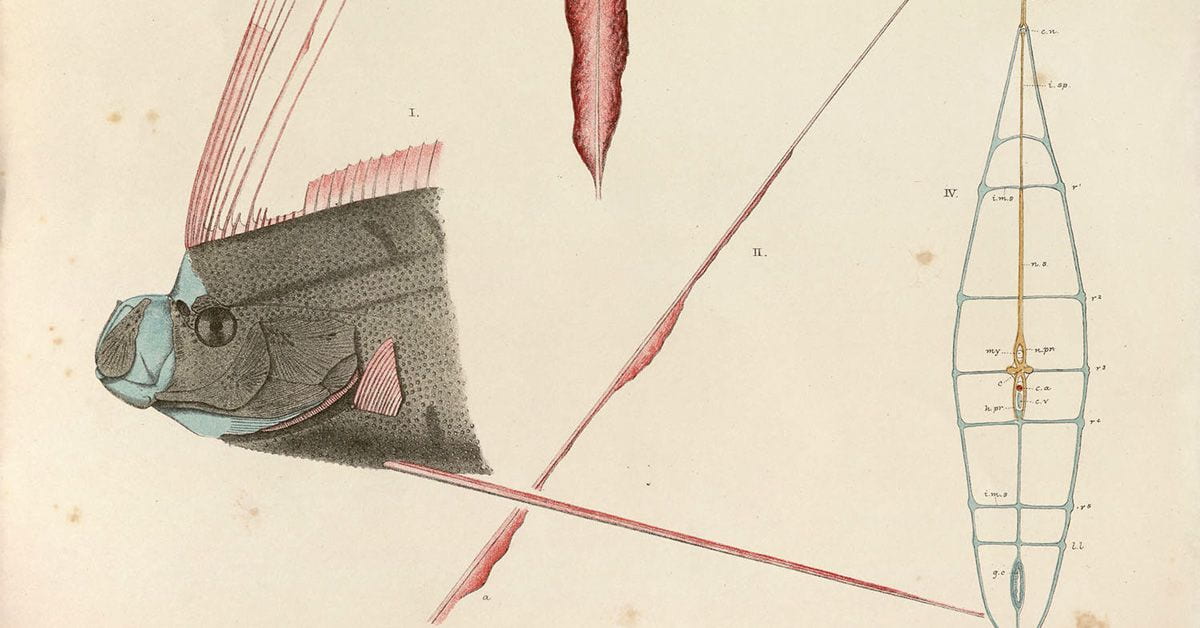A coveted science medal, a West Coast settlement and a dolphin are all named after renowned scientist and administrator James Hector. 16 March, his birthday, is also known in geoscience circles as Hector Day.1
Closer to home, James Hector’s name is also inscribed and stamped in some of the exquisitely illustrated volumes of The Transactions of the Zoological Society of London held in Special Collections in the General Library.2
An Edinburgh-born geologist and doctor, Hector (1834-1907), came to Aotearoa in 1862 to carry out a geological survey of Otago. He stayed and was appointed to lead several new organisations, including the N.Z. Geological Survey (now G.N.S. Science), the Colonial Museum (Te Papa), and the New Zealand Institute (N.Z.I.), a forerunner of the Royal Society Te Apārangi. He held some of these posts for decades.3

James Hector’s note in the Transactions of the Zoological Society of London. Click to see full note.
Hector oversaw several libraries, and was active in scientific networks internationally, including as a Fellow of the Zoological Society of London (ZSL).4 So, it was not surprising to find his signature and stamps in some of these ZSL Transactions. But it was surprising to find a note by Hector still inside after all these years.5
Signed ‘J.H.’, the undated and possibly incomplete note perhaps reflects Hector’s role as editor of the N.Z.I. Transactions. In the note, he records that Professor T. Jeffery Parker’s paper on Great Ribbon Fish was published in the 1884 N.Z.I. Transactions followed by the 1886 ZSL Transactions in which the note still rests. Noting that Parker drew his own illustrations, he remarks on the five plates illustrating the ZSL version, the use of ‘colours and metallic tints’ (see the main image) and likely production costs.5
Did Hector leave the note there by mistake? Or was it one of his assistants? We don’t know. Regardless, this fragment offers researchers another glimpse into Hector’s work and is a reminder that physical books can sometimes yield unexpected finds between their pages.
Jo Birks, Special Collections
References
1To name a few. The Geoscience Society of New Zealand marks 16 March as Hector Day with various activities, including a 2021 geoscience baking competition; R. K. Dell. ‘Hector, James’, Dictionary of New Zealand Biography. Te Ara – the Encyclopedia of New Zealand, https://teara.govt.nz/en/biographies/1h15/hector-james
2The Transactions of the Zoological Society of London. Vol. 7-12, incomplete. Glass Case Rack 590.5 T77; Fleming, C.A. (1987). Science, settlers and scholars: the centennial history of the Royal Society of New Zealand. Wellington, N.Z. The Society 1987, pp.109-117.
3Dell; Nathan, S. (2015). James Hector: explorer, scientist, leader. Lower Hutt: Geoscience Society of New Zealand, p.108.
4Dell; Nathan, S. (2015). Selected documents relating to the life and work of James Hector (1837-1907). Wellington, Geoscience Society of New Zealand, p.9; Fleming, pp.109-117.
5Loose handwritten note by Hector in Transactions of the Zoological Society of London, Vol. XII, Pt. 1, 1886. Another handwritten list, possibly by Hector, is in Vol. VIII, Pt. 1.
Featured image: Great Ribbon Fish, Transactions of the Zoological Society of London, Vol. XII, Pt. 1

